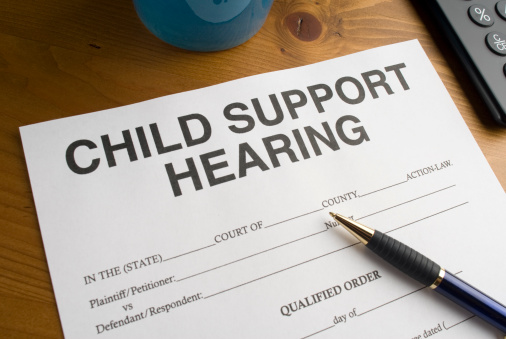 One of the most valuable outcomes of Collaborative Team Practice for many families is how respectfully the process helps prepare parents for effective co-parenting. Lee Eddison, a very experienced neutral coach in Collaborative Team Practice, aptly describes this as a transition from We (a married couple) to a different kind of We (co-parents).
One of the most valuable outcomes of Collaborative Team Practice for many families is how respectfully the process helps prepare parents for effective co-parenting. Lee Eddison, a very experienced neutral coach in Collaborative Team Practice, aptly describes this as a transition from We (a married couple) to a different kind of We (co-parents).
In Collaborative Team Practice, the expertise to make this transition is available from two mental health professionals on the team, the neutral child specialist and the neutral coach. The neutral child specialist offers a child-inclusive process to assist parents in the creation of a developmentally responsive Parenting Plan. The Parenting Plan lays an important foundation for effective-co-parenting with detailed agreements about decision making; communication; parenting expectations, routines and guidelines; and parenting time. This foundation is considerably strengthened when parents also create a Relationship Plan with their neutral coach.
The Relationship Plan is a set of clear and specific agreements about how parents can communicate effectively and resolve potential or actual conflicts in a productive manner once they have completed their divorce or separation and are on their own.
The Relationship Plan is not a list of cookie cutter recommendations or generic advice, but is specifically tailored to the unique needs and concerns of each family.
Included in the Relationship Plan are agreements about necessary boundaries to define safe emotional, physical and communication space for co-parenting.The neutral coach helps parents be specific about what words and behaviors from a co-parent would feel respectful and supportive, what could easily trigger negative emotions, and what to do if negative emotions are triggered. The Relationship Plan helps parents anticipate and prepare for a number of sensitive and potentially complicated interpersonal situations that frequently arise after a divorce or break up.Creating a Relationship Plan also provides an opportunity for parents to articulate and build on their own and their co-parent’s strengths.
In my experience as a
neutral child specialist, parents who invest the time and resources to create a Relationship Plan with their neutral coach have prepared themselves as fully as possible for their lifelong relationship as co-parents.
On behalf of their children, what could possibly be more valuable than that?
 Divorcing parents often wonder how vacations are treated in a parenting plan. There are often three types of vacation options addressed in divorce.
Divorcing parents often wonder how vacations are treated in a parenting plan. There are often three types of vacation options addressed in divorce.






 Peace is possible though we are surrounded by high conflict. In the recent words of former Secretary of State Madeleine Albright, “The world is a mess.” Messiness occurs when people are unable or unwilling to resolve differences without wars of words or weapons. This occurs not only globally but also on a personal scale. And for all the extraordinary human costs of violent conflict, the most deeply distressing is its impact on children.
The end of a marriage is not unlike the breaking up of a country based on sectarian differences. Is it possible to disconnect without civil war? Yes, but one must be mindful of the path one is choosing, and deliberately opt to not do battle. Though sometimes complicated, peaceful resolutions are possible if the focus remains the safety and wellbeing of children.
I do not believe conflict is inevitable, because for every cause of conflict there is an inverse possibility. In our day-to-day lives, we can choose a path of peace. We can elect to follow
Peace is possible though we are surrounded by high conflict. In the recent words of former Secretary of State Madeleine Albright, “The world is a mess.” Messiness occurs when people are unable or unwilling to resolve differences without wars of words or weapons. This occurs not only globally but also on a personal scale. And for all the extraordinary human costs of violent conflict, the most deeply distressing is its impact on children.
The end of a marriage is not unlike the breaking up of a country based on sectarian differences. Is it possible to disconnect without civil war? Yes, but one must be mindful of the path one is choosing, and deliberately opt to not do battle. Though sometimes complicated, peaceful resolutions are possible if the focus remains the safety and wellbeing of children.
I do not believe conflict is inevitable, because for every cause of conflict there is an inverse possibility. In our day-to-day lives, we can choose a path of peace. We can elect to follow 


 When you are ready to start a divorce, nothing creates more frustration than the reluctant spouse. How are you supposed to move forward with your life when your husband or wife doesn’t want a divorce? Here is my advice for dealing with the spouse who is dragging their feet.
1. Keep your long-term goals in the forefront, rather than taking short-term aggressive action.
A friend of mine from another state called me recently to tell me about her meeting with a divorce lawyer. My friend wants a divorce; her husband doesn’t. The lawyer said she ought to serve and file divorce papers on her husband and tell her three children about the divorce by herself so she controlled the story to the kids.
This kind of advice is what gives lawyers a bad name. Like most people with kids, my friend wants to protect them from conflict and have a good co-parenting relationship after the divorce. That means she has to work with her husband, not set up a firestorm of conflict by launching an aggressive attack.
2. Get the right support to help your spouse.
A spouse who is not emotionally ready to handle a divorce can make the process difficult. It’s much more effective to connect with resources to help your spouse accept the divorce. If you have been in marriage counseling, you could enlist the counselor to facilitate conversations about your desire for a divorce and options for proceeding. Discernment counseling, which is a limited scope form of therapy, is another approach. Or you could work with a collaborative divorce coach, who is skilled at working with couples who are have a gap in their respective readiness to proceed with divorce.
3. Use the time to gather necessary financial documents.
While you are letting your spouse play “catch up” emotionally, it helps to feel like you are taking steps to move forward. One task that has to happen is gathering financial information. You can contact a collaborative financial neutral to find out about their services and the information that will be needed. You can gather records, such as tax returns, mortgage documents, bank statements, and credit card statements. You can look into insurance costs as an individual and look into housing options. Gathering all the financial information usually takes some time, and there is no reason why you can’t get a start on that important step. It will make things go more quickly once you are ready to start the process.
It is rare for both spouses to be in the same place emotionally when deciding to end a marriage. If you can give your spouse some time and support to accept that the marriage is over, you gain a less frustrating divorce process and a foundation for a good working relationship as co-parents.
When you are ready to start a divorce, nothing creates more frustration than the reluctant spouse. How are you supposed to move forward with your life when your husband or wife doesn’t want a divorce? Here is my advice for dealing with the spouse who is dragging their feet.
1. Keep your long-term goals in the forefront, rather than taking short-term aggressive action.
A friend of mine from another state called me recently to tell me about her meeting with a divorce lawyer. My friend wants a divorce; her husband doesn’t. The lawyer said she ought to serve and file divorce papers on her husband and tell her three children about the divorce by herself so she controlled the story to the kids.
This kind of advice is what gives lawyers a bad name. Like most people with kids, my friend wants to protect them from conflict and have a good co-parenting relationship after the divorce. That means she has to work with her husband, not set up a firestorm of conflict by launching an aggressive attack.
2. Get the right support to help your spouse.
A spouse who is not emotionally ready to handle a divorce can make the process difficult. It’s much more effective to connect with resources to help your spouse accept the divorce. If you have been in marriage counseling, you could enlist the counselor to facilitate conversations about your desire for a divorce and options for proceeding. Discernment counseling, which is a limited scope form of therapy, is another approach. Or you could work with a collaborative divorce coach, who is skilled at working with couples who are have a gap in their respective readiness to proceed with divorce.
3. Use the time to gather necessary financial documents.
While you are letting your spouse play “catch up” emotionally, it helps to feel like you are taking steps to move forward. One task that has to happen is gathering financial information. You can contact a collaborative financial neutral to find out about their services and the information that will be needed. You can gather records, such as tax returns, mortgage documents, bank statements, and credit card statements. You can look into insurance costs as an individual and look into housing options. Gathering all the financial information usually takes some time, and there is no reason why you can’t get a start on that important step. It will make things go more quickly once you are ready to start the process.
It is rare for both spouses to be in the same place emotionally when deciding to end a marriage. If you can give your spouse some time and support to accept that the marriage is over, you gain a less frustrating divorce process and a foundation for a good working relationship as co-parents.